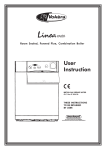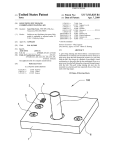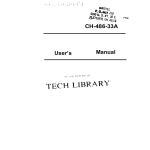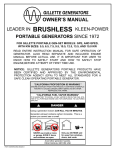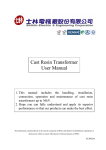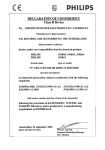Download Camera image stabilization method, apparatus and computer program
Transcript
US007969496B2 (12) United States Patent (10) Patent N0.: (45) Date of Patent: Pilu (54) (56) CAMERA IMAGE STABILIZATION METHOD, US 7,969,496 B2 Jun. 28, 2011 References Cited APPARATUS AND COMPUTER PROGRAM U.S. PATENT DOCUMENTS (75) Inventor: Maurizi Pilu, Bristol (GB) 4,959,725 5,335,042 6,429,895 6,614,994 2002/0180876 (73) Assignee: Hewlett-Packard Development Company, LP, Houston, TX (US) (*) Notice: Subject to any disclaimer, the term of this patent is extended or adjusted under 35 Dec. 25, 2003 Foreign Application Priority Data Apr. 30, 2002 6/l998 IEEE Transactions on Consumer Electronics, v01. 35, N0. 4, Nov. 1989, pp. 749-758. Tucker et al., “Image Stabilization for a Camera on a Moving Plat form”, IEEE Pac Rim ’93, pp. 734-737. Prior Publication Data (30) lO-l48859 Clarkson et al., “Unsupervised Clustering of Ambulatory Audio and Video”, Perceptual Computing, MIT Media Lab. Oshima et al., “VHS Camcorder With Electronic Image Stabilizer”, Apr. 30, 2003 US 2003/0234885 A1 Mandle ....................... .. 358/222 Imafuji et a1. . ....... .. 396/55 Onuki .............. .. 348/208.99 Ohishi et al. ....... .. 396/55 Sobol .......................... .. 348/296 OTHER PUBLICATIONS (21) Appl. N0.: 10/426,038 (65) 9/l990 8/1994 8/2002 9/2003 12/2002 FOREIGN PATENT DOCUMENTS JP U.S.C. 154(b) by 2515 days. (22) Filed: A A * Bl * B2 * Al* * cited by examiner Primary Examiner * Gevell Selby (GB) ................................. .. 02099679 (57) ABSTRACT (51) Int. Cl. H04N 5/222 (52) US. Cl. ............................ .. 348/333.02; 348/208.99 A camera comprises a user interface for the input of informa tion indicative of the activity of a user. A control unit controls at least one function of the camera in response to the infor (58) Field of Classi?cation Search ........... .. 348/333.02, mation. (2006.01) 348/208.99; 396/55 See application ?le for complete search history. 12 Claims, 4 Drawing Sheets 100 114 115 116 112 102 113 US. Patent Jun.28,2011 Sheet10f4 US 7,969,496 B2 nMEDUE E0 '% O O!m: o US. Patent Jun. 28, 2011 Sheet 2 0f4 131 US 7,969,496 B2 OPTICAL \ IMAGE & M46 DETECTOR ROM 11.1 ‘| , Compensation Programs "'\ 150 31 m ~I :42 M- ' '28 40 113 “mg PROCESSOR EZZ> MEMORY u: ___..____ m +=-133 115\-| ti CARD \4 I4 /—\ ‘ v IMAGE 42 Car .434 IS ' A11“ =--I35 \lb \\ ~1..___ 1054'L'— Ski --136 Processor ContrOIIeI; / 13! INTERNAL .444 SENSORS Figure 2 US. Patent Jun. 28, 2011 Sheet 3 of4 US 7,969,496 B2 No 200 Check whether user interface operated l Yes 202 _ Determme type of activity selected 204 Set camera motion compensation parameters based upon selected activity l Capture image and/or image 206 . . . sequence usmg motion compensation FIGURE 3 US. Patent Jun. 28, 2011 Sheet 4 0f 4 US 7,969,496 B2 US 7,969,496 B2 1 2 Preferably said information is utilised to determine what CAMERA IMAGE STABILIZATION METHOD, images will be captured and subsequently stored by the cam APPARATUS AND COMPUTER PROGRAM era. Preferably, said information is indicative of at least one of FIELD OF THE INVENTION the type of motion likely to be undergone by the user; the type of motion likely to be undergone by the camera; the attention The present invention relates to methods, apparatus and computer programs suitable for camera image stabilization. of the user; the behaviour of the user; and the surrounding environment. Preferably, said camera further comprises a user activity determination unit for estimating the activity of a user. The camera utilizes the estimated activity if, for a predetermined BACKGROUND TO THE INVENTION A variety of digital and analogue cameras exist for captur ing images in a number of formats including still picture images, sequences of still picture images and video image interval, said estimated activity differs from the activity indi cated by the user input information. Preferably, said camera is a wearable camera. sequences. In a further aspect, the present invention provides a user interface for a camera. The user interface inputs information The quality of an image is easily affected by movement of the camera while the image is being collected, i.e., captured. indicative of the activity of a user, for the subsequent control Modern cameras, such as video cameras, now feature motion of at least one function of the camera as a function of said stabilization so as to produce a steady video image in spite of any user handshake or other vibrational disturbances. This 20 improves the quality of the captured image. For instance, US. Pat. No. 4,959,725 describes a method of and apparatus for processing an image captured by a video indicative of the activity of a user input from a user interface. A further aspect of the invention relates to a camera com camera so as to identify undesired video image motion caused by camera motion (rotation or translation), and to subse quently generate a corrected signal in which the undesired information. In another aspect, the present invention provides a camera comprising a control unit arranged to control at least one function of the camera in dependence upon information 25 prising a user interface for the input of information indicative of at least one of the motion of the user and the motion of the image motion is reduced. camera. The camera includes a control unit arranged to con It is known that different stabilization techniques are needed to compensate for different types of motion. Modern trol at least one function of the camera in dependence upon cameras incorporate motion detection sensors to determine the type of motion a camera experiences (e.g. sudden accel eration or deceleration, or the camera slowly panning across a view). The cameras apply the appropriate motion compen sation technique automatically based on a derived measured camera motion, and whether the motion is determined to be 30 At least one function of the camera is controlled as a function 35 deliberate or not. Also known in the art are cameras that act as situation based selective video recording systems. For instance, the article “Unsupervised clustering of ambulatory audio and video” by Brian Clarkson and Alex Pentland, Technical said information. In a further aspect, the present invention provides a method of controlling a camera comprising the steps of: receiving information from a user indicative of the activity of the user. of the information. Preferably the user activity is selected from a predeter mined group of activities. Each activity in said group is asso ciated with at least one predetermined parameter. The method comprises the step of controlling said function by utilising 40 said parameter associated with the user selected activity. In another aspect, the present invention provides a program Report 471, MIT Media Lab, Perceptual Computing Group, arranged to perform the above method. describes a camera, including a wearable computer system, arranged to record the day to day activities of a user. The machine readable medium comprising the program. In a further aspect, the present invention provides a article describes the development of a system for extracting events and scenes from the audio/visional input of the camera, so that the camera images can easily be indexed. Preferred embodiments of the present invention aim to obviate or overcome a problem associated with the prior art, 45 BRIEF DESCRIPTION OF THE DRAWING For a better understanding of the invention, and to show how embodiments of the same may be carried into effect, reference will now be made, by way of example, to the whether referred to herein or otherwise. 50 SUMMARY OF THE INVENTION accompanying diagrammatic drawings in which: FIG. 1 is a perspective view of a camera according to a preferred embodiment of the present invention; In a ?rst aspect, the present invention provides a camera comprising a user interface for the input of information indicative of the activity of a user; and a control unit arranged FIG. 2 is a block diagram of electronic circuitry in the camera of FIG. 1; 55 to control at least one function of the camera in dependence upon said information. Preferably, said user interface comprises a user selection unit for the manual selection of at least one activity from a predetermined group of activities. Preferably, said control unit is arranged to store said infor FIG. 3 is a ?ow diagram of steps involved in operating the camera of FIG. 1; and FIG. 4 is a perspective view of a camera with a separate user interface according to an alternative embodiment of the present invention. 60 DETAILED DESCRIPTION OF THE DRAWING mation with at least one image captured by the camera for subsequent processing. Preferably, said function comprises an image stabilisation mode of the camera. Preferably, said function comprises an image capture mode of the camera. 65 FIG. 1 is a perspective view of a digital camera 100 that comprises a user interface 102, lens 103, slot 104 for receiv ing an image memory card, and shutter release button 105, as well as a strap (not shown) suitable for attaching the camera to a body part ofa user e.g. the user’s head. US 7,969,496 B2 4 3 Processor 142 of the image stabilization unit (responsive to The user interface 102 comprises six buttons 111-116. Each of buttons 111-116 corresponds to a different potential the image coupled through lens 103) provides image com pensation for the image captured by detector 146 by utilizing activity of the user i.e. socializing button 111, walking button parametric dynamic models stored in programs 131-136 and signals that control program 138 stores for determining which 112, running button 113, travelling on or in a motorized vehicle such as an automotive vehicle button 114, riding a image features and sensed movements of the camera are used bicycle button 115 and skiing button 116. The user selects the type of activity which he or she intends to undergo by pres sing for stabilization, and to what degree. The activity setting inputs of switches 111-116 by the user are associated with entries in programs 131-136 that can be considered tables of parameters that are used by the stabilization unit. The tables ensure that processor 142 uses stabilization techniques and the appropriate button. Reference is now made to FIG. 2 of the drawing, a block diagram of electronic circuitry included within camera 100. The electronic circuitry includes switch contacts 121-126, respectively associated with buttons 111-116, such that in response to one of the buttons being pressed, the associated parameters for the particular activity. Hence, different stabi lizations are used for the different activities associated with switches 111-116. Processor 142 supplies a signal indicative switch contacts are closed. Each of switch contacts 121-126 is of the stabilized image (via bus 148) to image memory card connected to input terminals of read only memory (ROM) 130, which includes compensator programs 131-136, respec tively associated with switch contacts 121-126. Compensator 150 of the type typically loaded in a digital camera. For instance, wearable camera 100 mounted on a helmet programs 131-136 are programs associated with social activi ties, walking activities, running activities, riding in an auto mobile activities, biking activities and skiing activities, 20 while skiing is stabilized by processor 142 in response to the signals from programs 136 and 138, sensors 144 and detector 146. The stabilization is with respect to the ski track, and ignores the skier head motion and trees in the signal that respectively. ROM 130 also includes processor controller 138 detector 146 derives. Similarly, processor 142 in camera 100 and output bus 140 for supplying signals from compensator mounted on a helmet of a person in a motor vehicle responds programs 131-136 and process controller 138 to digital signal processor 142. Programs 131-136 supply motion compensa tion signals to processor 142 (typically an application speci?c to switch 114, sensors 144 and detector 146 to ignore accel 25 eration-induced head motion and stabilize the motion only integrated circuit (ASIC))via bus 140, under the control of with respect to the car. When camera 100 is located on a person in a social situation such as at a party, activation of closure of switches 121-126 and processor controller 138, which is activated to supply control signals to bus 140 and processor 142 in response to shutter release button 105 being button 111 causes program 131 to supply processor 142 with a signal that takes into account the focus of interest of the user (e.g. observing a fellow partygoer) so as to adequately record 30 pressed. the desired still picture and/ or video sequence signal that camera 100 supplies to memory card 150. It will be appreci ated that these techniques relating to stabilization are pro The motion compensation signals that programs 131-136 supply to processor 142 are derived in accordance with the vided by way of example only, and that other stabilization principals set forth in the previously mentioned Tucker and Oshima et al. articles. Processor 142 is also responsive to inertial sensors 144 included in camera 100 and the output of optical image detector 146, included in camera 100 to be 35 activity input by the user. The problem of image stabilisation has been known for a responsive to the optical image coupled to the interior of the camera via lens 103, as a result of the shutter (not shown) of camera 100 being open in response to button 105 being long time, and many algorithms and apparatuses have been 40 pressed. Processor 142 responds to the signals from the selected compensator program 131-136, inertial sensors 144, and optical image detector 146 to produce a digital compen sated image representing signal under the control of process controller 138. Processor 142 includes output bus 148 for techniques can be utilized as appropriate depending on the 45 devised to address this problem. Prior art solutions have uti lized automatic motion detection. However, automatic motion detection is prone to errors, unpredictable behaviours and requires extra processing power and/or hardware, to pro vide adequate image compensation in a wide variety of situ ations. By providing user interface 102 that employs manual settings of user activity, the motion compensation that pro supplying digital signals representing the compensated cessor 142 provides can be optimized for the particular image. Processor 142 supplies the compensated image rep motion types likely to be experienced during that activity. The image stabilization techniques can thus be inexpensively and resenting signal to image memory card 150 via bus 148. Image memory card 150 is of a conventional type adapted to easily optimized, making best use of the available informa Thus, buttons 111-116 are respectively associated with compensation programs 131-136 of read only memory tion that can be detected by the camera. FIG. 3 is a ?ow diagram of the steps control program 138 causes processor 142 of camera 100 (having user interface (ROM) 137, which can be considered part of an electronic image stablization unit located in camera 100. ROM 130 button 105. Firstly, program 138 causes processor 142 to be inserted into slot 104 of camera 100. responds to activation of buttons 111-116 to supply (via bus 140) electronic processor 142 with signals from the program 50 102) to perform in response to operation of shutter release 55 131-136 selected by one of buttons 111-116 and from pro gram 138. Processor 142 is programmed by the signals on bus 140 to process an image signal that detector 146 supplies to the Once processor 142 determines that the user interface has 60 processor to compensate for the motion of camera 100. The image stabilization unit including processor 142 also includes inertial sensors 144 that measure movement of the camera and acceleration experienced by the camera. Processor 142 combines the signals from sensors 144, detector 146 and on bus 140 to form an image processing unit that determines key features of the image captured by detector 146. make a check, by reading the signal on bus 140 to determine whether user interface 1 02 has been operated (operation 200). 65 been operated, program 138 activates processor 142 by read ing bus 140 to determine the type of activity selected i.e. which one of buttons 111-116 has been pressed (operation 202). Subsequently, based upon the determined type of activ ity, the camera motion processor 142 responds to the signal on bus 140 indicative of the compensation parameters appropri ate for the activity as supplied to the processor 142 from the selected program 131-136 of the camera image compensation processing unit. These parameters, in combination with the signals from inertial sensors 144 adjust the operation of pro US 7,969,496 B2 5 6 cessor 142 in processing the image from detector 146 so as to images (still pictures, sequences of pictures and/or video be most appropriate for the selected activity (operation 204). sequences) should be captured or indexed. Subsequently the signal representing the captured image Such a memory aid camera might have a user interface and/or captured image sequences are motion compensated (operation 206) using the selected parameters and then sup plied by processor 142 to memory card 150 via bus 148. Examples of motion compensation using different param de?ning user activities such as “shopping”, “commuting”, “working” and “at a party”. When the “party” activity is selected, such a camera would be arranged to automatically eters for different motions are described in the articles I. C. Tucker, A. de San Lazaro, “Image stabilization for a camera focus for a relatively long period of time. This is likely to result in the capture and/or indexing of images of people on a moving platform”, Proceedings of IEEE Paci?c Rim Conference on Communications Computers and Signal Pro cessing, Vol. 2, pp 734-7, May 1993, and in M. Oshima, et al., “VHS Camcorder with Electronic Image Stabilizer”, IEEE whom the user would like to remember. capture and/or index images on which the user appears to Alternatively, if the user selects the “working” activity by pressing an apparatus “work” button (not shown) on camera 100, program 138 responds to the pressed work button to cause camera 100 to automatically capture and/or index Transactions on Consumer Electronics, vol. 35, no 4, pp 749-758, June 1989. These articles describe how the camera motion can be automatically detected, and then the motion images only when the majority of the scene changes. This ensures that images are not captured and/or indexed when the user is sitting and continuously working at a desk. compensation applied. Because detecting motion automatically can be very unre liable, the manual selection through user interface 102 (as proposed above) puts the user in control of the behavior of The camera also includes an internal clock that is part of processor 142. In response to activation of the “wor ” button, 20 camera 100 responds to the clock to only capture images camera 100. In cases such as when the user’s motion de?nes during working hours, and not to capture images during other the very model of user attention, this is even more important. hours e.g. during the lunch interval. While various examples of activities have been disclosed, it will be appreciated that the term “activity” can be inter preted as any occupation or pursuit being undergone by a user, including the user undergoing various forms of motion and the user undergoing various social and environmental inter actions during which the user’s attention might be directed at It will be appreciated that the above embodiment is pro vided by way of example only, and that other embodiments fall within the scope of the present invention. 25 For instance, the user interface 102 can be a unit separate from the camera, and arranged to communicate with the camera via an umbilical cord 104 (as shown in FIG. 4) or wireless communication e.g. infrared communication between the camera and the user interface unit. While the user interface 102 has been indicated as com different subjects. 30 The reader’s attention is directed to all papers and docu ments which are ?led concurrently with or previous to this prising a number of discrete manually operated buttons 111 speci?cation in connection with this application and which 116, it will be appreciated that a user interface can be imple are open to public inspection with this speci?cation, and the mented with any HCI (Human Computer Interaction) contents of all such papers and documents are incorporated mechanism, such as a graphical user interface, soft buttons, or speech recognition. Such an interface can be pre-pro grammed with a pre-de?ned set of activities linked to a pre de?ned set of parameters for control of the camera, or any aspect can be controlled and programmed by the user. For 35 instance, the user might alter the parameters associated with the “bike” button 115 so as to provide optimum compensation for the type of bike riding normally undertaken by the user, 40 of the steps of any method or process so disclosed, can be such as whether the user normally rides on the road or 45 image stabilisation unit to provide motion compensation/ image stabilisation for the captured image, the present inven tion can also be applied to cameras which do not have such on board units. Instead, information indicative of the selected activity can be stored along with the image data. Such infor mation can subsequently be utilised for optimum processing of the image data in a post-capture phase. For instance, a video sequence might be stabilised after capture on another viewing apparatus (e.g. use of a personal computer) accord ing to an activity setting input by the user aron the time the 50 instance, a camera arranged to be worn by the user and act as a memory aid, could use the information to determine which features. The invention is not restricted to the details of the foregoing embodiment(s). The invention extends to any novel one, or any novel combination, of the features disclosed in this speci drawings), or to any novel one, or any novel combination, of the steps of any method or process so disclosed. 55 The invention claimed is: 1. A camera, comprising: a user interface for the input of information indicative of the activity of a user wherein said user interface com 60 prises a user selection unit for the manual selection of at least one activity from a predetermined group of manu ally selectable activities; attention of the user or the environment surrounding the user, or to otherwise set the context in which the camera is expected to operate. Such information can be utilised by the camera to control other functions besides image stabilisation. For or similar purpose, unless expressly stated otherwise. Thus, unless expressly stated otherwise, each feature disclosed is one example only of a generic series of equivalent or similar ?cation (including any accompanying claims, abstract and image was captured. In the preferred embodiment, user interface 102 is utilised to input information indicative of the activity of the user, and hence the type of motion of the user. Equally however, a user interface could be utilised to input information on the activity of the user indicative of the behaviour of the user, the likely combined in any combination, except combinations where at least some of such features and/or steps are mutually exclu sive. Each feature disclosed in this speci?cation (including any accompanying claims, abstract and drawings), can be replaced by alternative features serving the same, equivalent engages in mountain biking. While the preferred embodiment utilises an in-camera herein by reference. All the features disclosed in this speci?cation (including any accompanying claims, abstract and drawings), and/or all a control unit arranged to control at least one function of the 65 camera in dependence upon said information; and a user activity determination unit arranged to estimate the activity of a user, the camera being arranged to utilize the estimated activity if, for a predetermined interval, said US 7,969,496 B2 8 7 estimated activity differs from the manually selected a control unit arranged to control at least one function of the activity indicated by the input information. camera in dependence upon said information; and a user activity determination unit arranged to estimate the activity of a user, the camera being arranged to utilize the 2. The camera as claimed in claim 1, Wherein said control unit is arranged to store said information With at least one image captured by the camera for subsequent processing of said image. activity indicated by the input information. 3. The camera as claimed in claim 1, Wherein said function comprises an image stabilization mode of the camera. 4. The camera as claimed in claim 1, Wherein said function comprises an image capture mode of the camera. 5. The camera as claimed in claim 4, Wherein said infor mation is utilized to determine What images are captured and 10. A method of controlling a camera comprising the steps of: causing a user of the camera to manually supply informa tion to the camera indicative of a manual selection of manually selectable mode of activity of the user; controlling at least one function of the camera as a function subsequently stored by the camera. 6. The camera as claimed in claim 1, Wherein said infor mation is indicative of at least one of the type of motion likely of said information; 15 is a wearable camera. 8. A camera comprising: a control unit arranged to control at least one function of the camera in dependence upon information indicative of a manual selection of an activity from among a plurality of manually selectable activities by user manual input from mation. 20 25 the step of controlling said function of the camera by utilizing a parameter associated With the selected activity. 12. A non-transitory storage medium storing a computer program arranged to control a camera, the program being arranged to cause the camera to: receive information manually input from a user indicative of a selection of an activity from a plurality of selectable estimated activity if, for a predetermined interval, said estimated activity differs from the activity indicated by the input information. activities by the user; control at least one function of the camera in dependence upon said information; 9. A camera comprising: a user interface for the manual selection of an activity from a selection of selectable activities and associated input of 11. The method as claimed in claim 10, Wherein each one of the activities in said group being associated With at least one predetermined parameter, the method further comprising a user interface; and, a user activity determination unit arranged to estimate the activity of a user, the camera being arranged to utilize the information indicative of at least one of a manually selectable motion of the user and a manually selectable motion of the camera; estimating the activity of a user; and utilizing the estimated activity if, for a predetermined inter val, said estimated activity differs from the manually selected mode of activity indicated by the supplied infor to be undergone by the user; the type of motion likely to be undergone by the camera; the attention of the user; the behav ior of the user; and the surrounding environment. 7. The camera as claimed in claim 1, Wherein said camera estimated activity if, for a predetermined interval, said estimated activity differs from the manually selectable 5 estimate the activity of a user; and 35 utilize the estimated activity if, for a predetermined inter val, said estimated activity differs from the activity indi cated by the supplied information. * * * * * UNITED STATES PATENT AND TRADEMARK OFFICE CERTIFICATE OF CORRECTION PATENT No. : 7,969,496 B2 APPLICATION No. DATED : 10/42603 8 ; June 28, 2011 INVENTOR(S) : Maurizio Pilu Page 1 of 1 It is certified that error appears in the above-identi?ed patent and that said Letters Patent is hereby corrected as shown below: On the Title page, in ?eld (75), Inventor, in column 1, line I, delete “Maurizi Pilu,” and insert -- Maurizio Pilu, --, therefor. Signed and Sealed this Third Day of April, 2012 David J. Kappos Director 0fthe United States Patent and Trademark O?ice










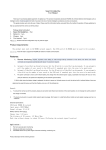

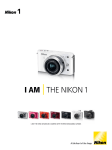
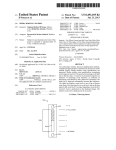
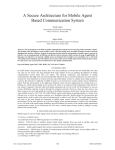

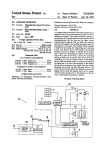
![`95385109 1%]?](http://vs1.manualzilla.com/store/data/005699459_1-7fc02fda0f8970d7c2f678aea00486d8-150x150.png)
